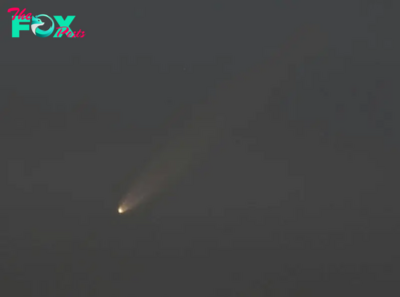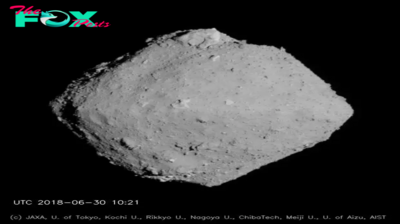Science
Can we refuel 'dead' satellites in space? Bold new missions aim to try.
Running out of gas is annoying at the best of times, let alone if you're a satellite traveling at speeds of up to 17,500 mph (28,200 km/h) high above Earth's surface. At the moment, a satellite that burns through all its fuel simply becomes space junk, adding to the vast debris field surrounding our planet.
"It's the equivalent of buying a car with one tank of fuel in it, and you throw the car away when you run out of that fuel," Ray Fielding, head of space sustainability at the UK Space Agency, told Live Science. Often, the satellites are perfectly functional and just lack the fuel to maneuver around debris, he added.
However, the space industry is aiming to change this paradigm by investing in projects that will allow satellites to be refueled and serviced in orbit. In addition to mitigating the growing problem of space junk, this more sustainable approach could cut down on wasted resources and reduce the costs associated with operating satellites.
Related: Undiscovered 'minimoons' may orbit Earth. Could they help us become an interplanetary species?
Reviving the orbital 'dead'
Colorado-based startup Orbit Fab aims to provide an all-inclusive satellite refueling service by 2025. The company also plans to offer repositioning services, potentially allowing for both longer and more versatile satellite operations. In fact, fuel is already available for preorder. It costs $20 million for 100 kilograms (220 pounds) of hydrazine, a common rocket fuel.
To accomplish this, Orbit Fab proposes a network of fuel depots parked in orbit and a fleet of fuel shuttles to dock with and refuel client satellites. Key to the vision is the company's refueling interface, the Rapid Attachable Fluid Transfer Interface (RAFTI). By replacing the conventional fill and drain valves found on satellites, RAFTI provides a universal way to refuel satellites on the ground or in orbit.
Recognizing the importance of an international standard for refueling interfaces, Orbit Fab released the designs for RAFTI under an open license in 2021, meaning anyone can produce it. The design has already been incorporated into more than 100 commercial satellites, according to Orbit Fab. However, a vast majority of satellites in orbit are not compatible.
Fielding likened this situation to cellphone chargers, suggesting we could end up with a bewildering array of incompatible solutions. The UK Space Agency is investigating a range of interfaces, including RAFTI, to find the best solution and plans to share the findings with the international community to encourage the adoption of an international standard.
"The last thing I want to do in orbit is have the wrong connector and be unable to provide the service," Fielding said.
The results of the testing will also inform the space agency's choice of interface for an upcoming debris-removal mission, which will incorporate refueling technology. Working with industry partners such as ClearSpace and Astroscale and anticipated to launch in 2026, the mission aims to remove at least four derelict satellites from orbit by pushing them into the lower atmosphere with a robotic arm.
NASA's on the case

Meanwhile, NASA is also developing technology to make satellite refueling a reality through the ongoing On-orbit Servicing, Assembly, and Manufacturing 1 (OSAM-1) mission.
OSAM-1 is a craft designed to refuel satellites in space. Notably, these satellites include those that weren't designed to be refueled — something Orbit Fab doesn't plan to do. OSAM-1, which is part of NASA's Technology Demonstration Missions program, was planned to launch in 2026 but is reportedly delayed and over budget.
—Big, dead European satellite will come crashing back to Earth this month
—NASA's 1st successful 2-way laser experiment is a giant leap for moon and Mars communications
—Watch a Chinese rocket booster fall from space and explode near a house in southern China
NASA plans to demonstrate OSAM-1's capabilities by refueling Landsat 7, an Earth-observing satellite launched in 1999. The mission hopes to showcase a suite of new technology, including advanced systems to enable reliable autonomous docking of OSAM-1 to other craft.
"The last thing you want is any sort of collision in any way, shape or form between the two objects," Fielding said. "So sensors, the recognition aspects, the ability to understand and then complete the interfaces needed autonomously are going to be crucial."
-

 Science1d ago
Science1d agoWhy Risky Wildfire Zones Have Been Increasing Around the World
-

 Science1d ago
Science1d agoIt’s Time to Redefine What a Megafire Is in the Climate Change Era
-

 Science3d ago
Science3d ago4 Astronauts Return to Earth After Being Delayed by Boeing’s Capsule Trouble and Hurricane Milton
-

 Science4d ago
Science4d agoThe Elegance and Awkwardness of NASA’s New Moon Suit, Designed by Axiom and Prada
-

 Science1w ago
Science1w agoSpaceX Launches Its Mega Starship Rocket. This Time, Mechanical Arms Catch It at Landing
-

 Science3w ago
Science3w agoYou Won’t Want to Miss October’s Rare Comet Sighting. Here’s How and When You Can See It
-

 Science1m ago
Science1m agoA New Spacecraft Could Help Determine if There’s Life on a Moon of Jupiter
-

 Science1m ago
Science1m agoWe Can Thank Deep-Space Asteroids for Helping Start Life on Earth



























